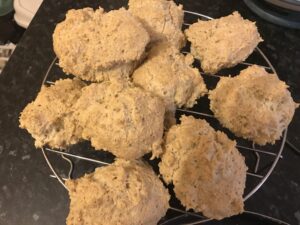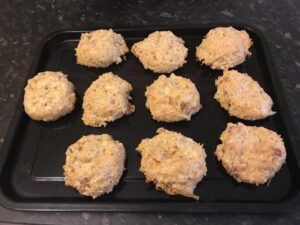When it comes to wellbeing, our mind, body and social environment all work together — this is often called the “bio-psycho-social” model. What we eat, drink and how we sleep can all affect our mood and energy. Likewise, how we feel mentally can influence our physical health and relationships.
If you’re not feeling your best, or struggling with stress, anxiety or low mood, take a moment to review your diet and habits. Overindulging in processed snacks or alcohol can affect both mood and sleep. Alcohol may help you drift off, but it disrupts your sleep cycles and causes dehydration. If you find yourself drinking to manage emotions, consider speaking with a therapist.
Ensure you stay hydrated throughout the day and supplement with electrolytes if required.
The ketogenic diet, once used successfully in the 1920s to treat epilepsy, is now being revisited for its potential benefits in areas such as autism, Alzheimer’s, cancer and metabolic health. It’s a low-carb, high-fat (LCHF) approach that encourages the use of fat as the body’s main fuel source. For an excellent read on this, see The Big Fat Surprise by Nina Teicholz.
There’s confusion about cholesterol among both health professionals and the general public. Our bodies make cholesterol because it’s essential — there isn’t really such a thing as “good” or “bad” cholesterol. Natural fats, including saturated ones, are not harmful in themselves. What we should avoid are trans fats and processed vegetable oils. [click the link for insight into how Sunflower Oil is manufactured].
As researcher Tony Royle [link to his recovery journey from a heart attack] explains, cholesterol is a single vital molecule, not two different kinds. For a deeper look into this subject, I recommend The Great Cholesterol Con by Dr Malcolm Kendrick, which challenges many of the myths surrounding heart disease and dietary fats.
If you’re planning to try any new diet, always check with a healthcare professional as appropriate whilst understanding that the mainstream “advice” may not be scientific so research widely.
For those curious about personal genetics, CircleDNA offers one of the most comprehensive DNA health tests available, covering nutrition, fitness, sleep, stress, and even ancestry. it can help to learn how genes influence my dietary responses and fitness potential. Understanding these genetic markers can really help tailor your approach to diet and lifestyle.
Another excellent company is VITL, which offers DNA nutrition tests, blood testing, and personalised vitamins.
With both of these companies, one might caution against sharing DNA results with external companies in case you are concerned for it to get into the wrong hands. They assure confidentiality, transparency and security but in the current climate please exercise your own caution.
Other recommended reads:
- The Pioppi Diet by Dr Aseem Malhotra
- The Real Meal Revolution by Professor Tim Noakes, Jonno Proudfoot & Sally-Ann Creed
- The Great Cholesterol Con by Dr Malcolm Kendrick
Please note: the above are affiliate links. I write freely to share helpful content — any purchases made through these links support my work, so thank you.
While some sources may question low-carb eating, there’s growing evidence that it supports better energy and can help with Type 2 diabetes. See this YouTube clip for more on how it helps stabilise blood sugar levels.
DISCLAIMER: Always consult a qualified healthcare professional before starting or changing your diet.
A simple morning tip — drink a glass of warm lemon water to rehydrate and wake up your system.
The ketogenic lifestyle can boost energy, clarity of mind and support weight loss once your body adapts to fat-burning.
Self-care is essential — whether through hypnotherapy, exercise, a good haircut or simply taking time for yourself. Looking after your wellbeing helps you function at your best.
Here are a few of my favourite keto recipes:
Ketogenic Bread Rolls
Spinach Gratin
Tasty Keto Bacon & Cheese Muffins




